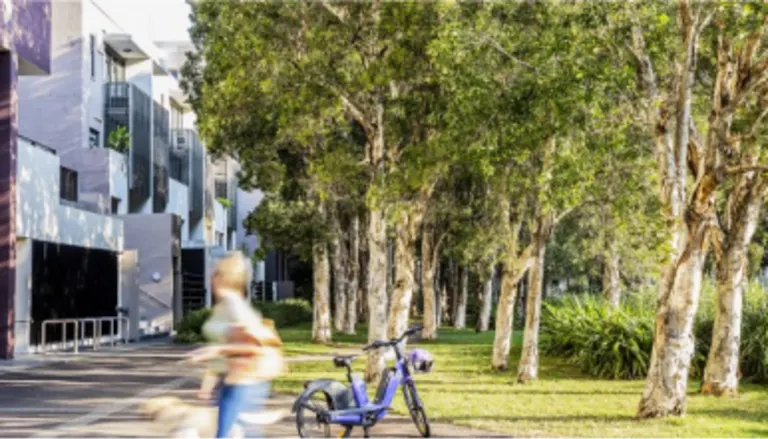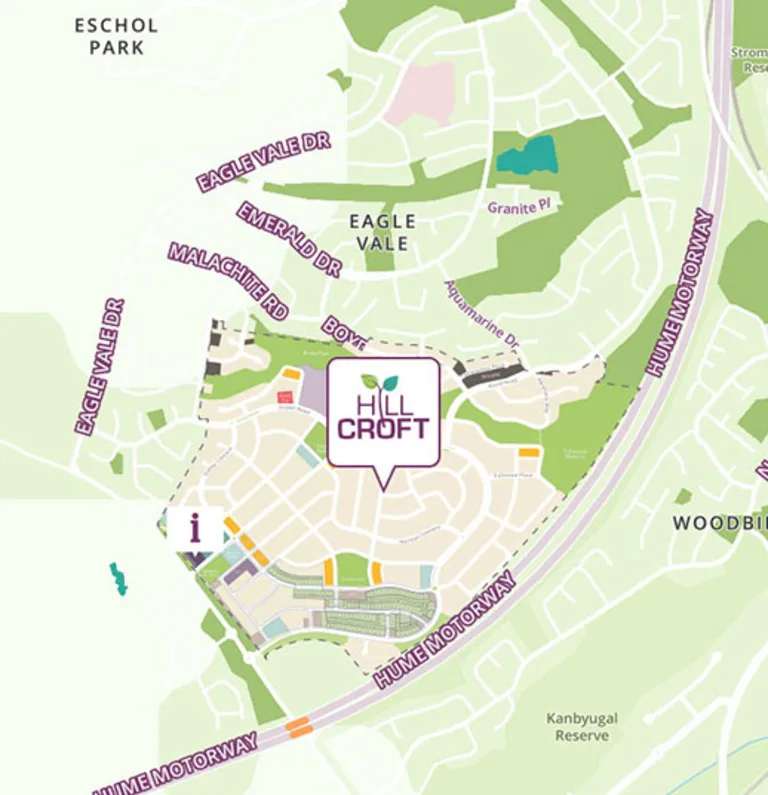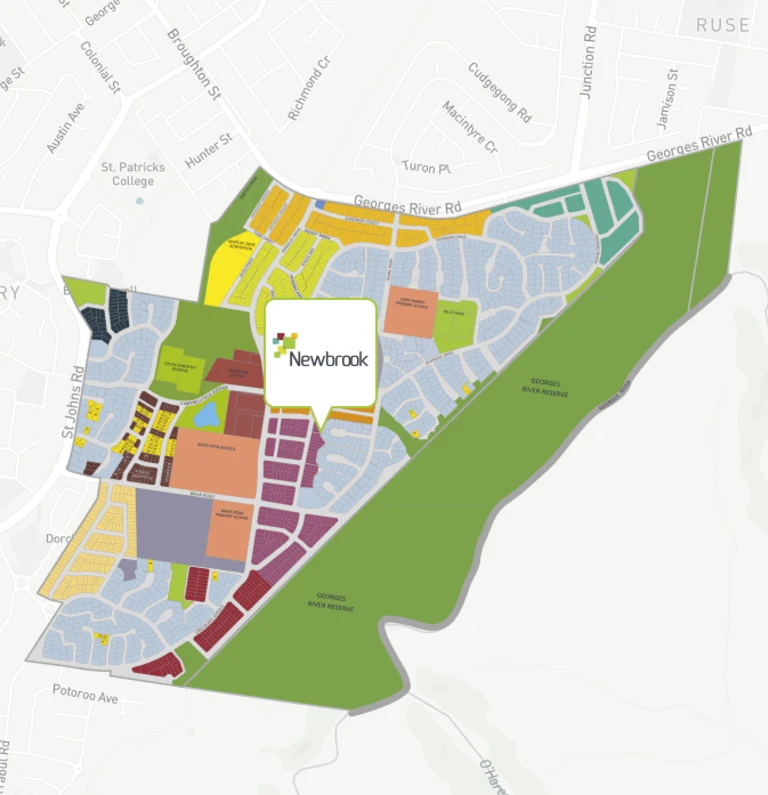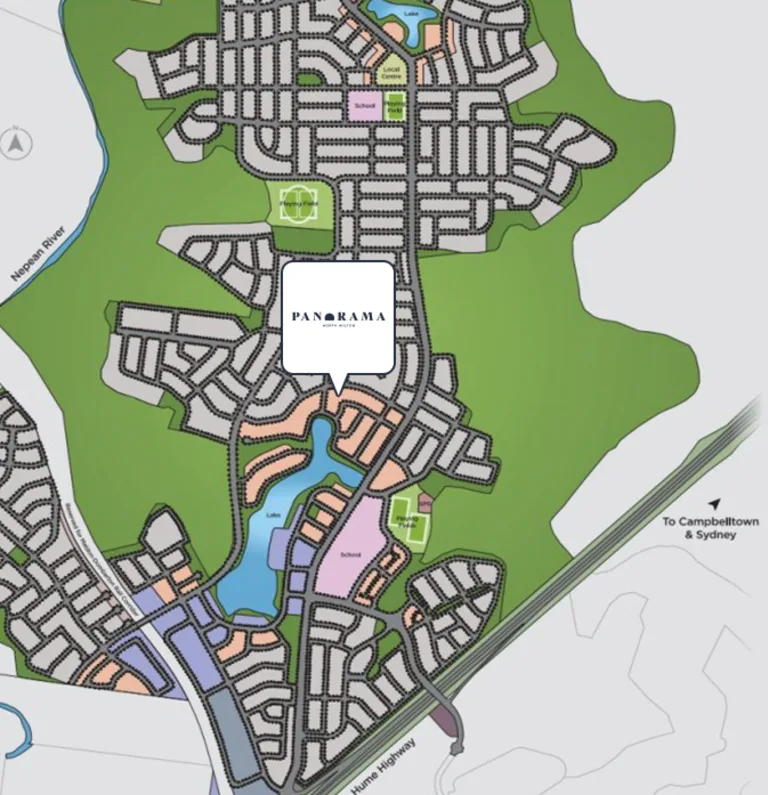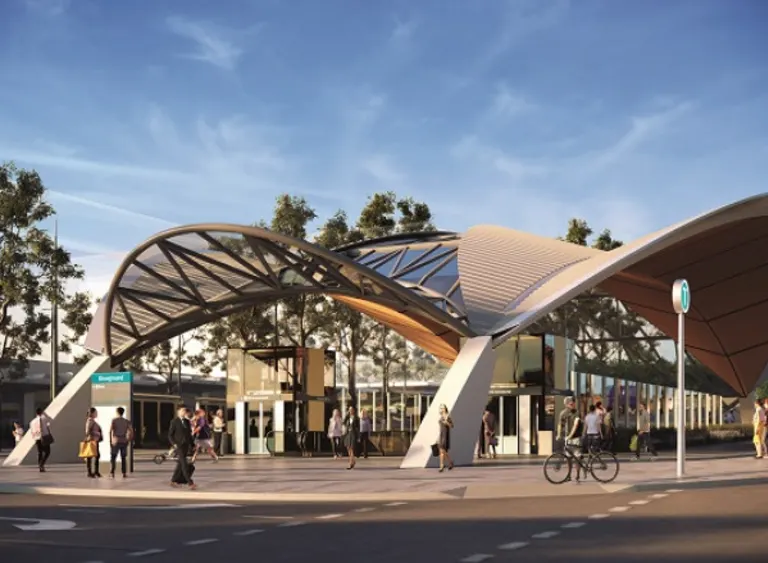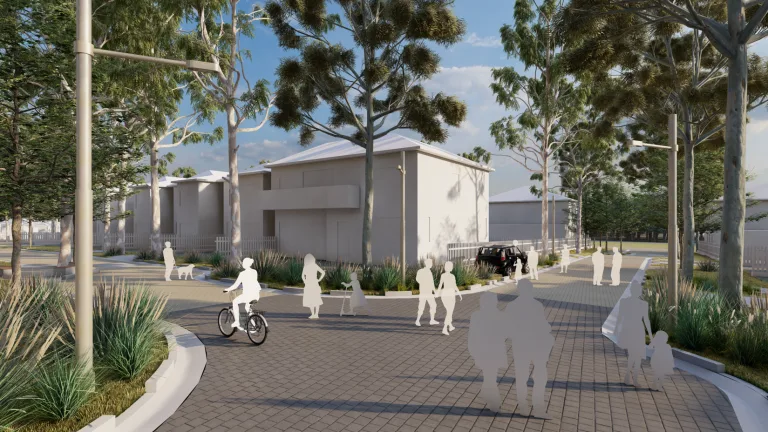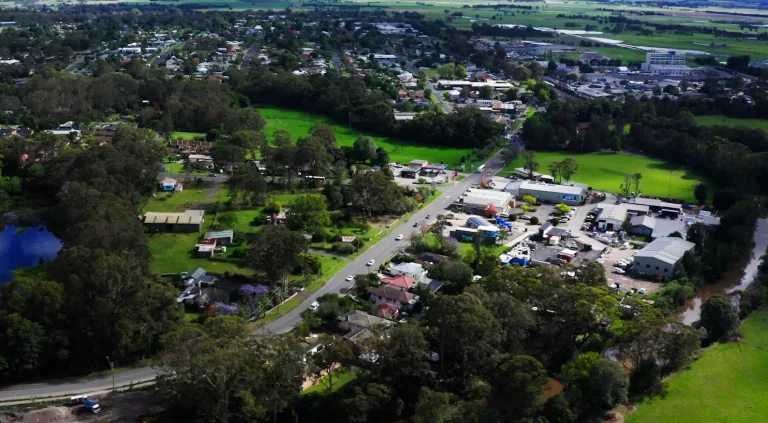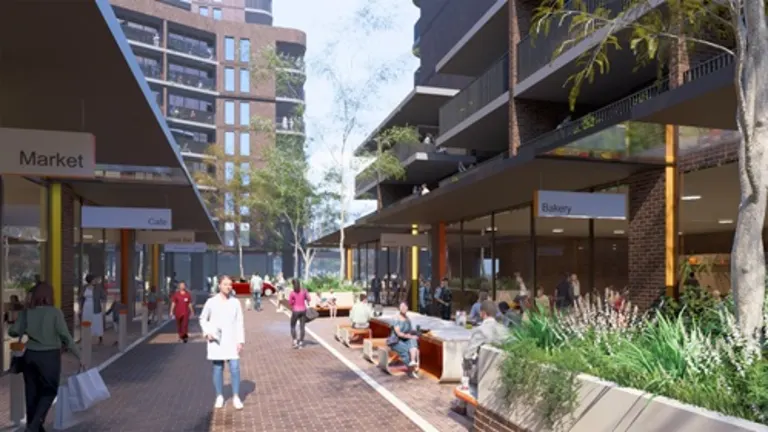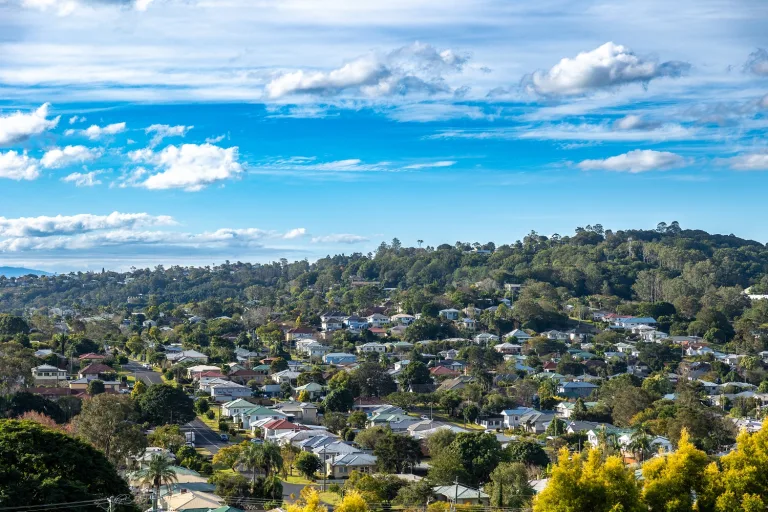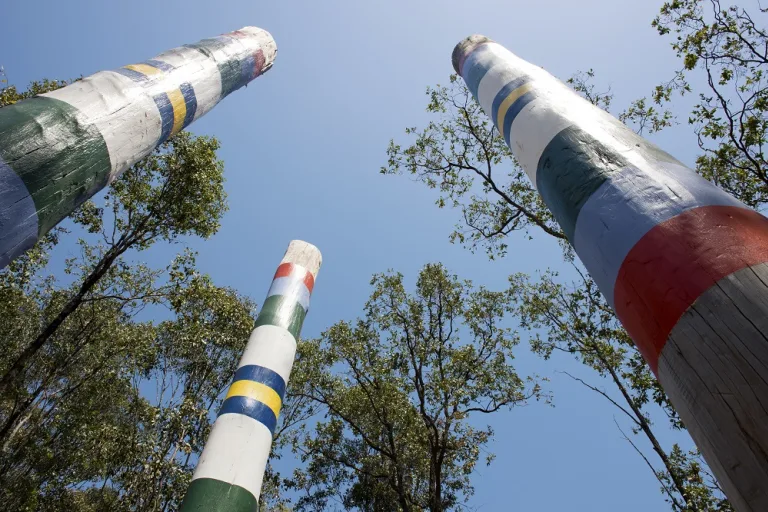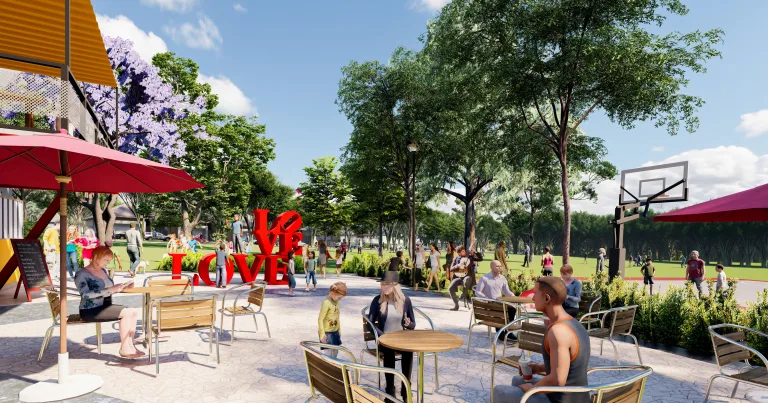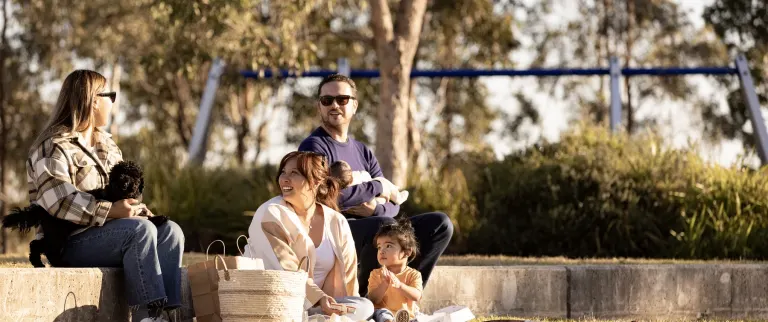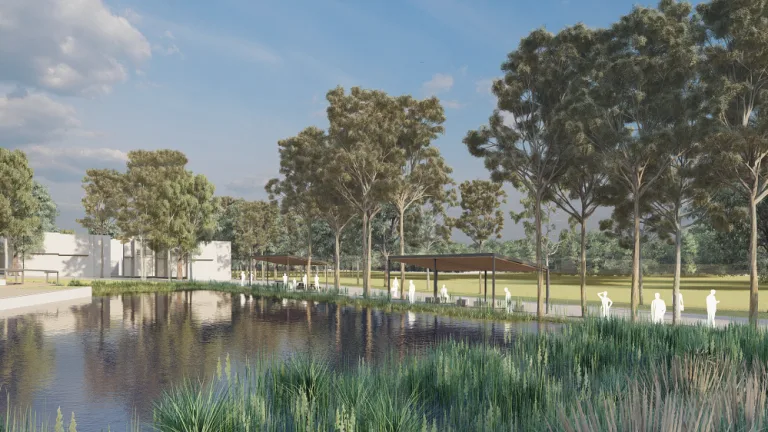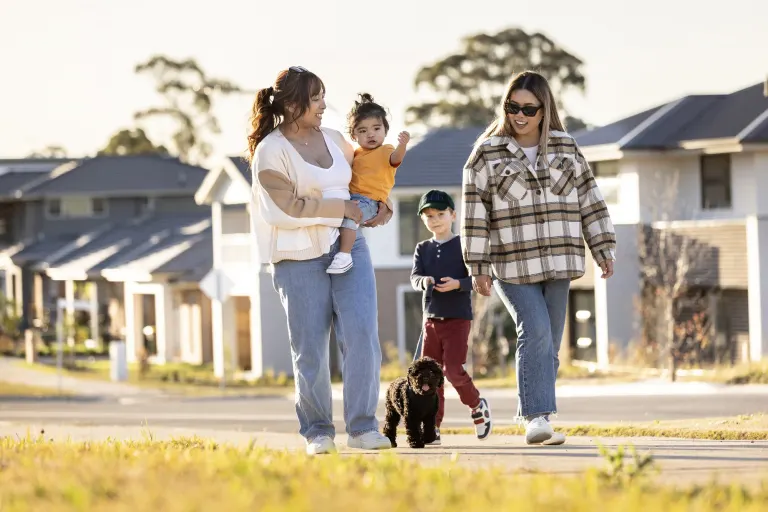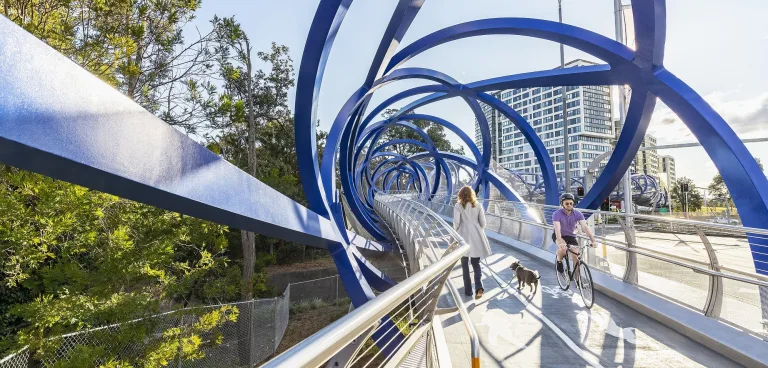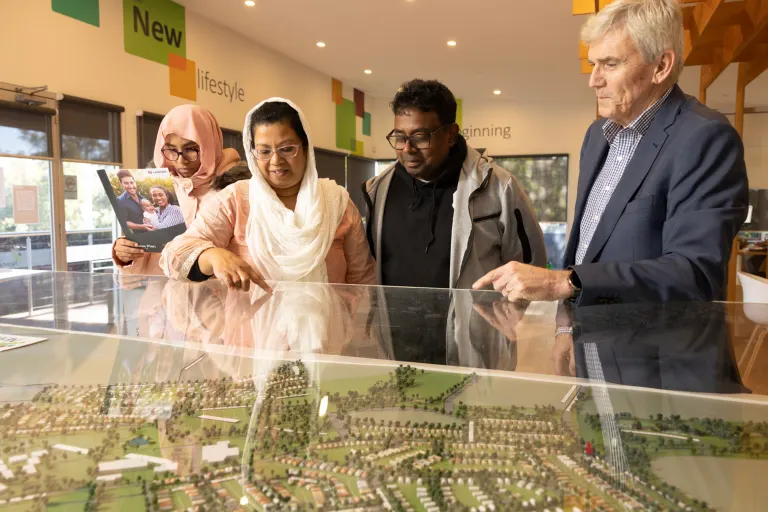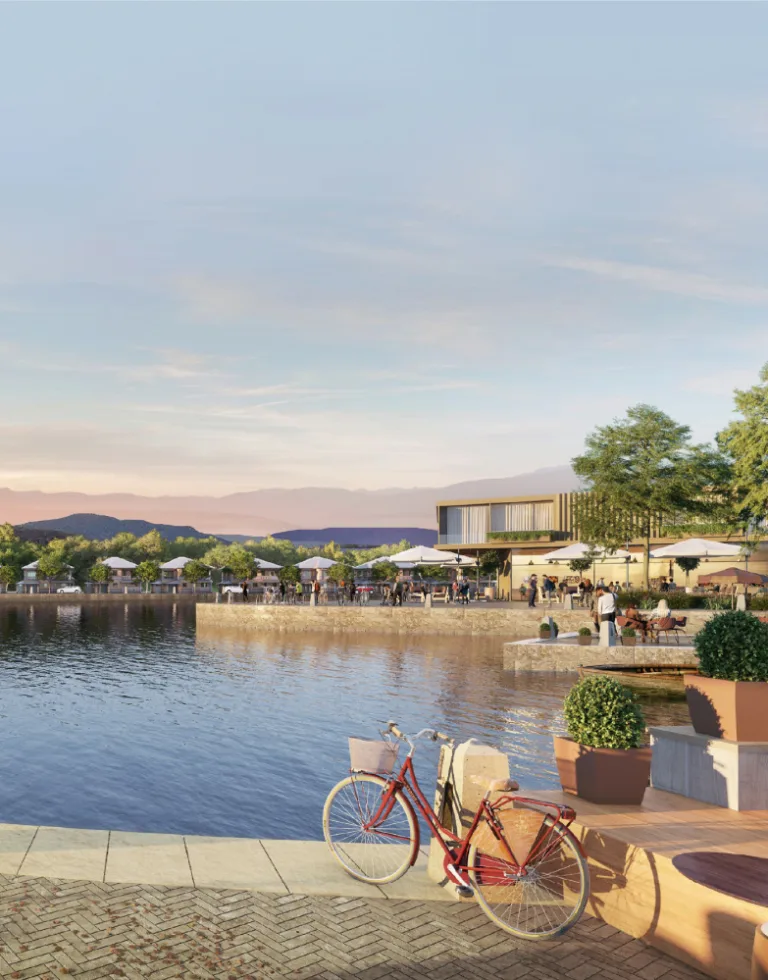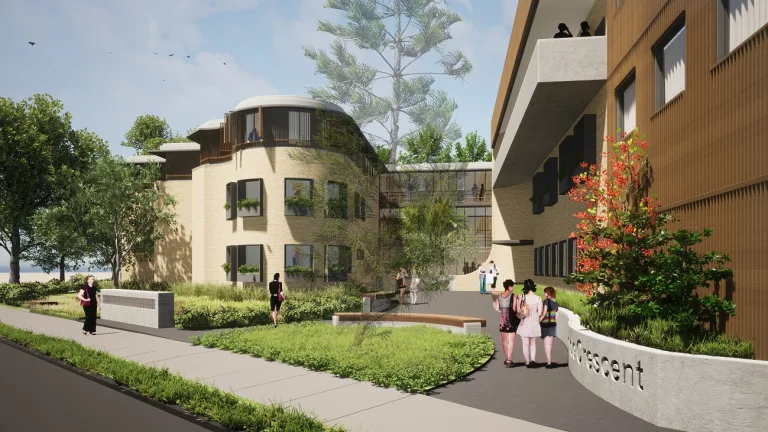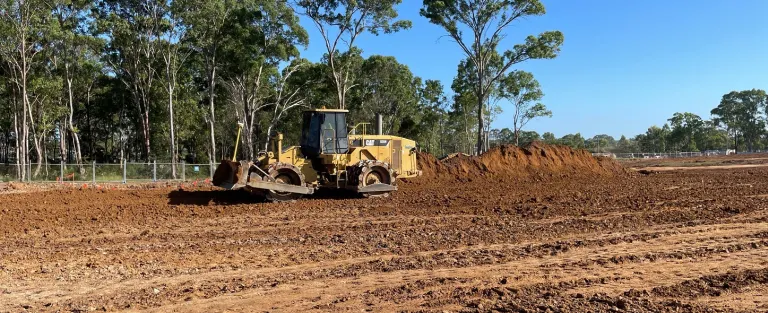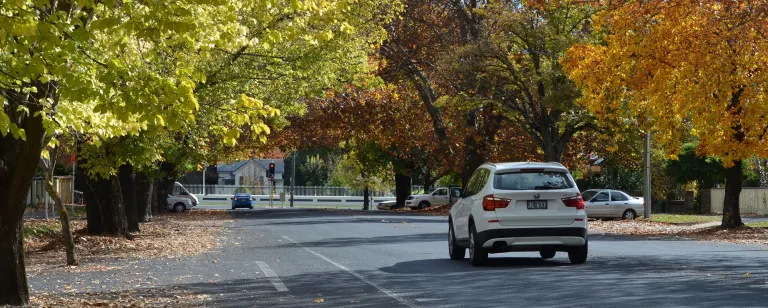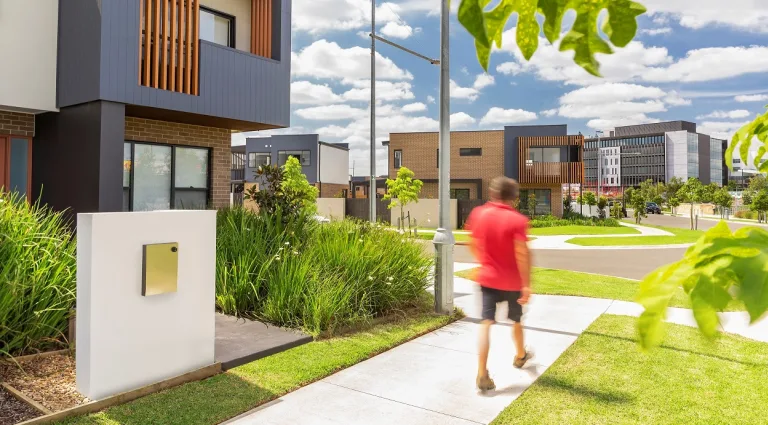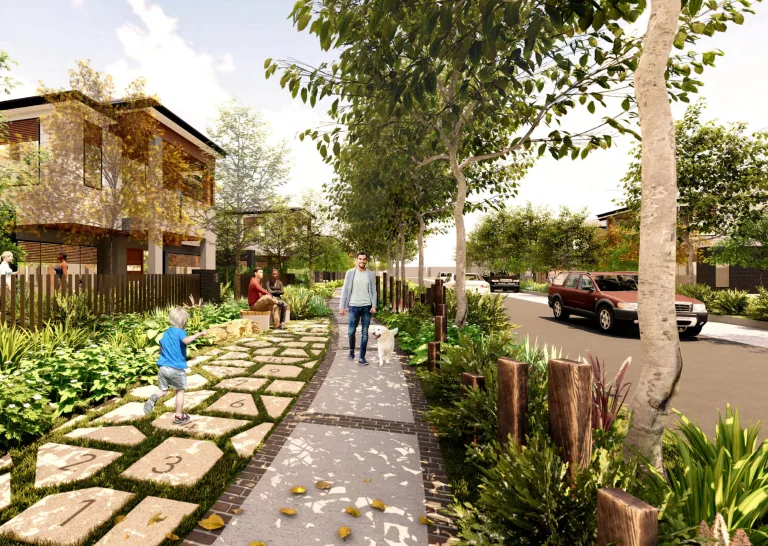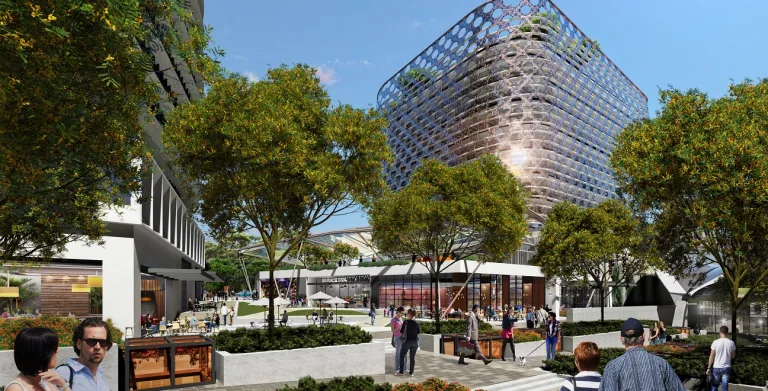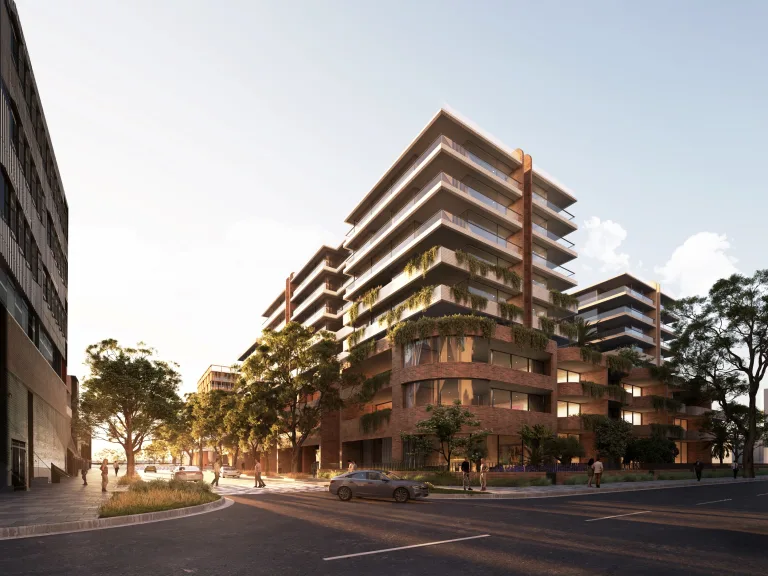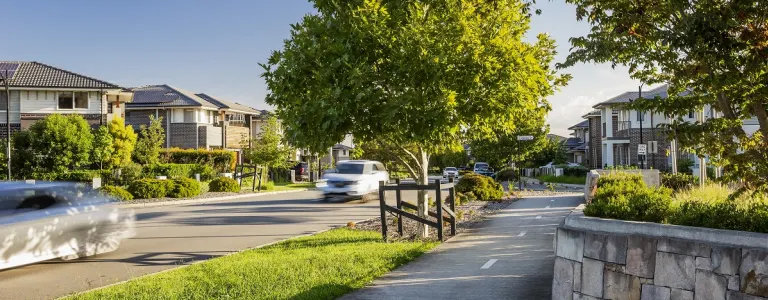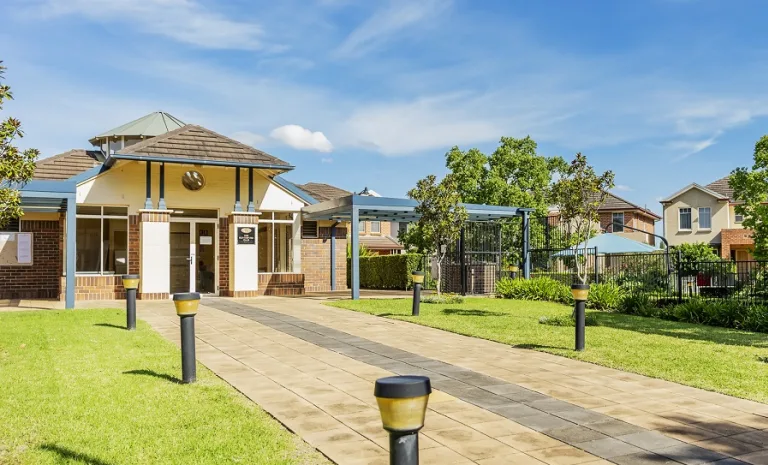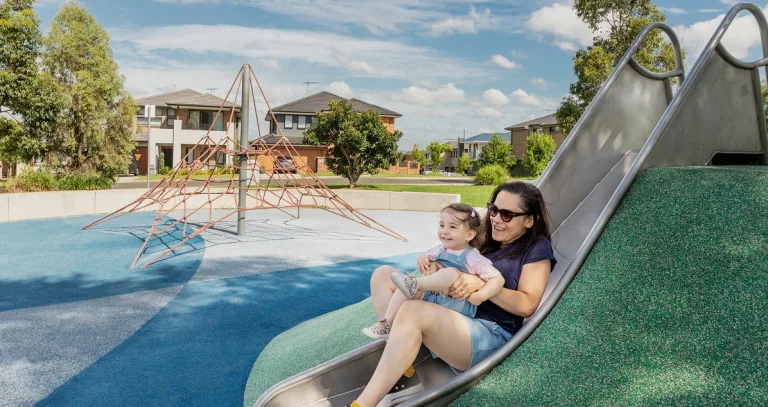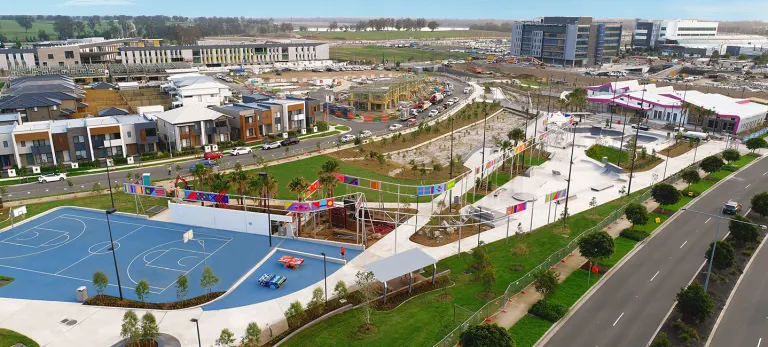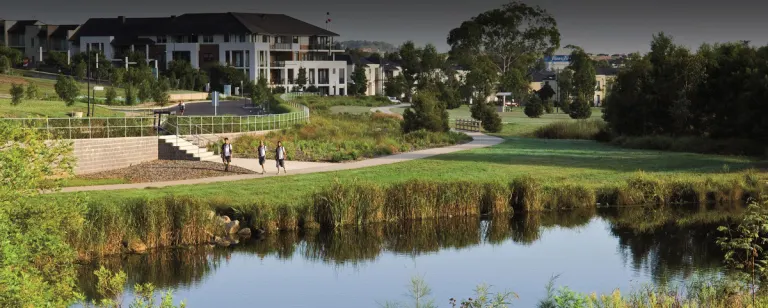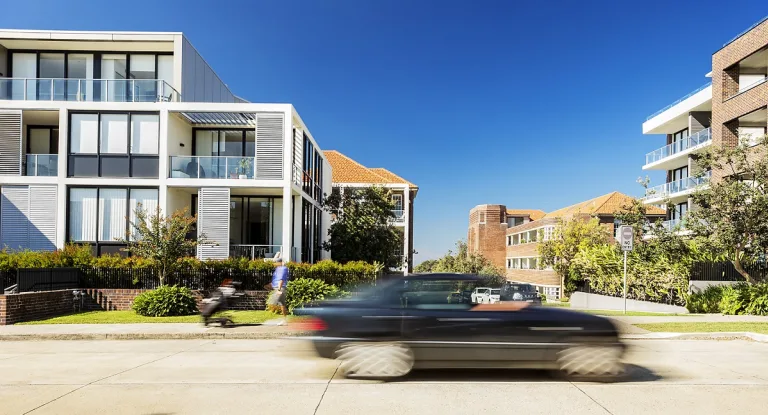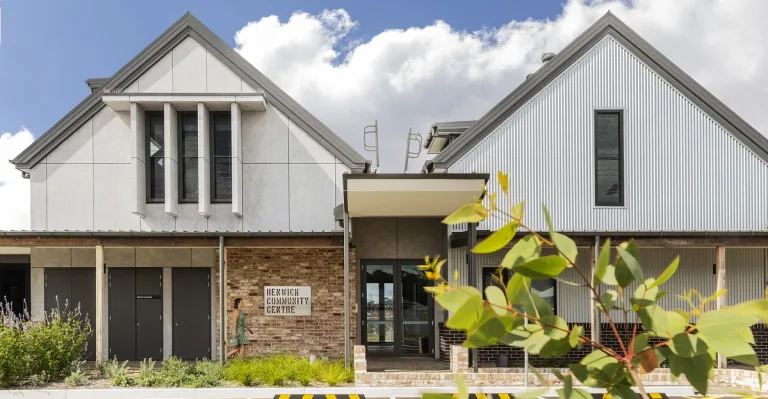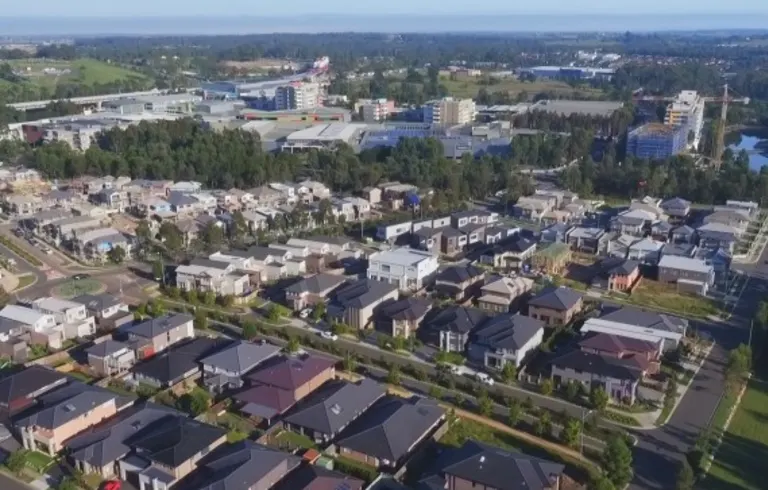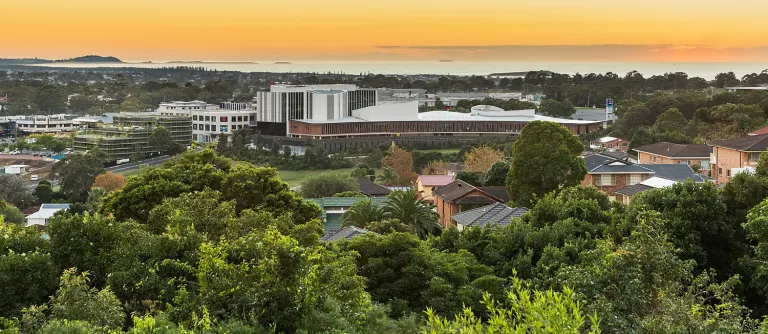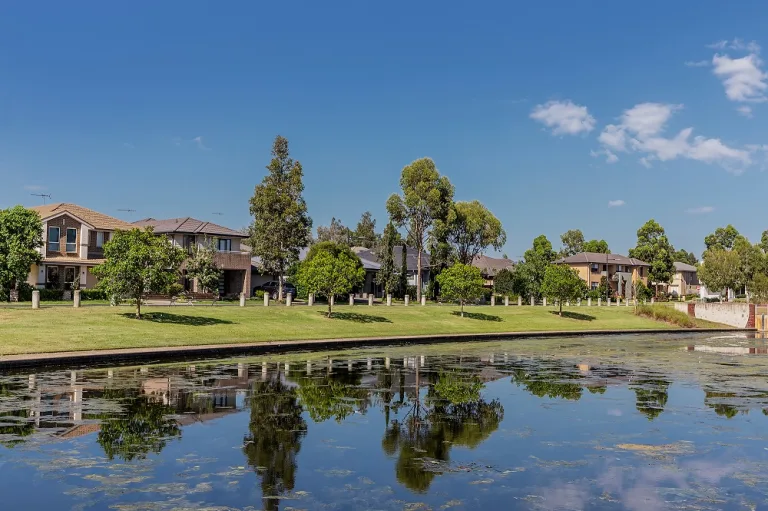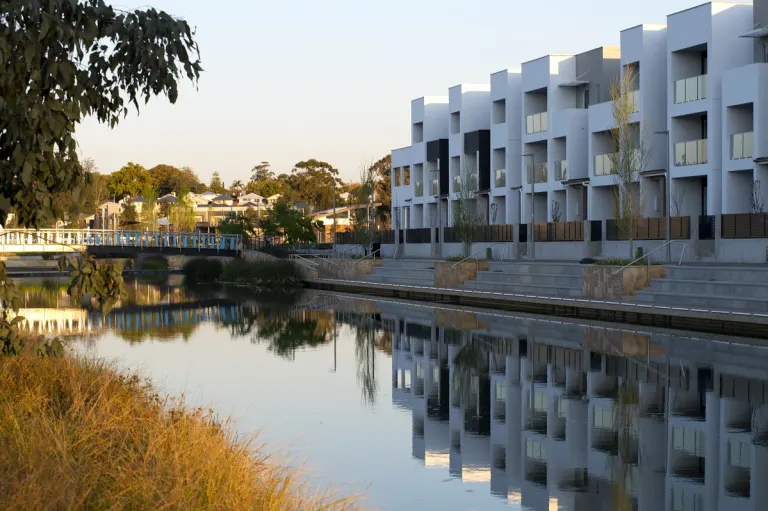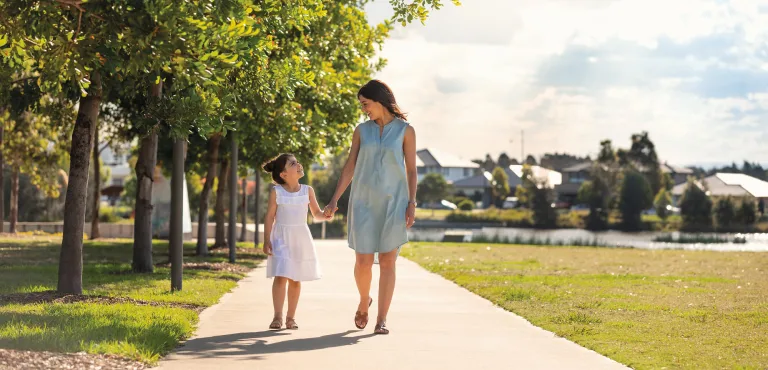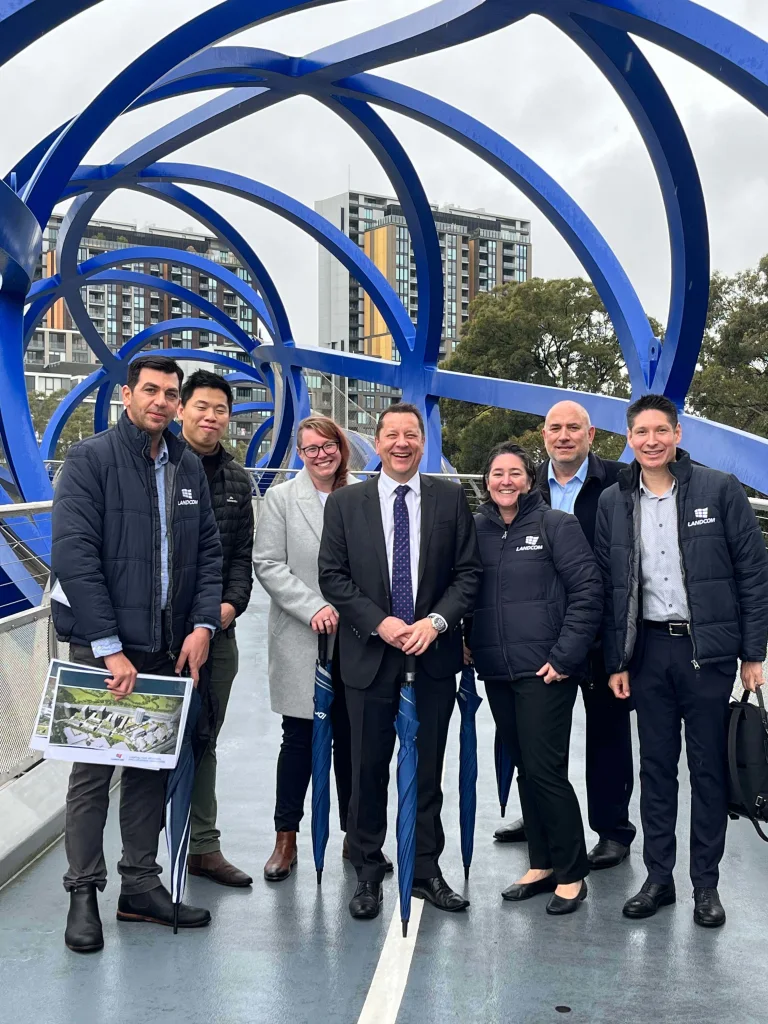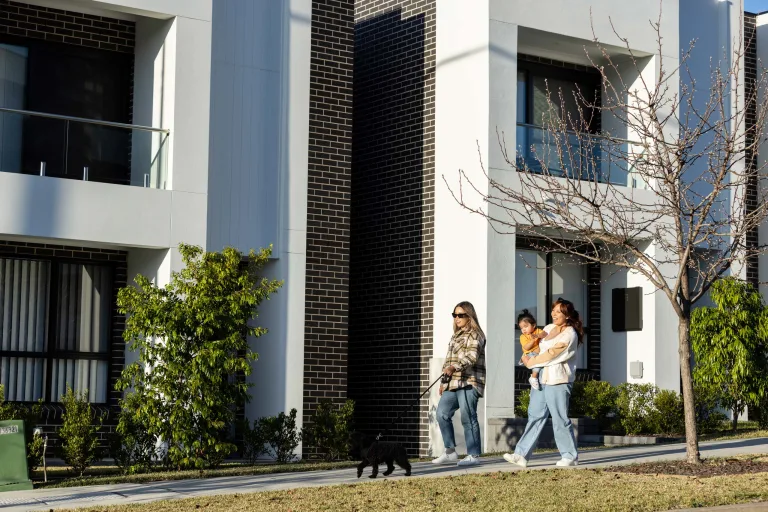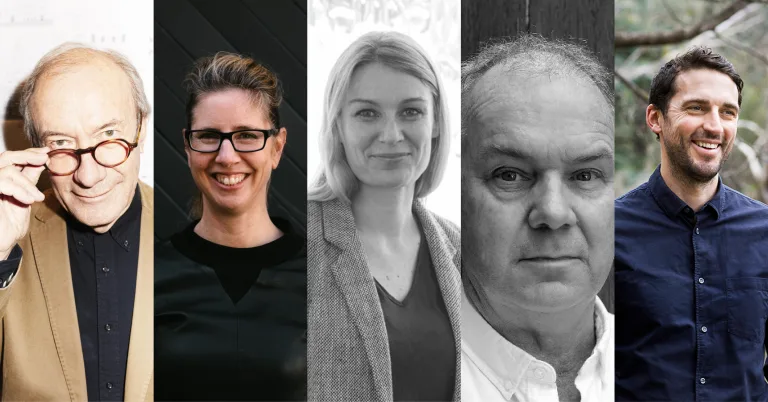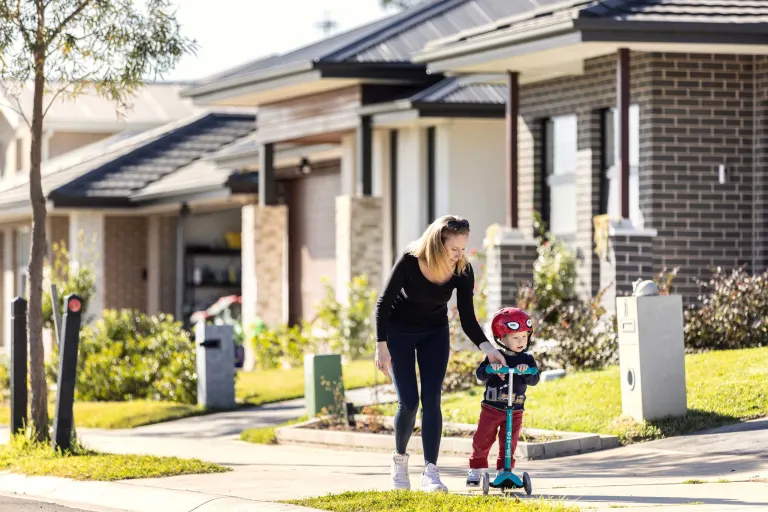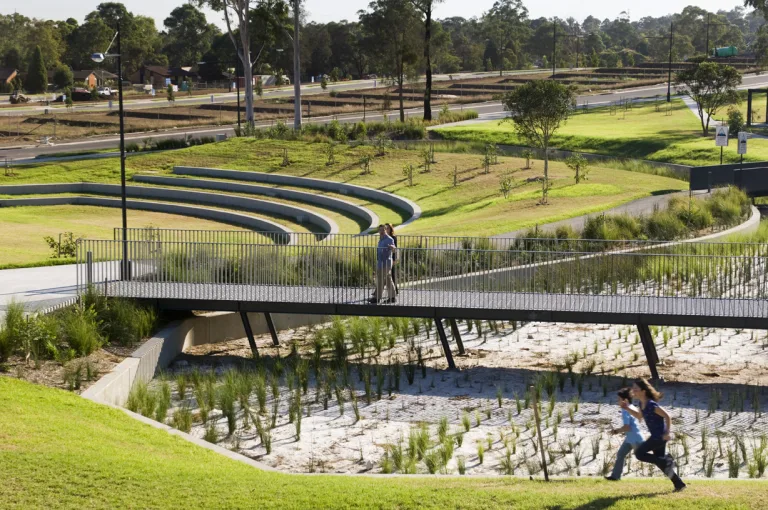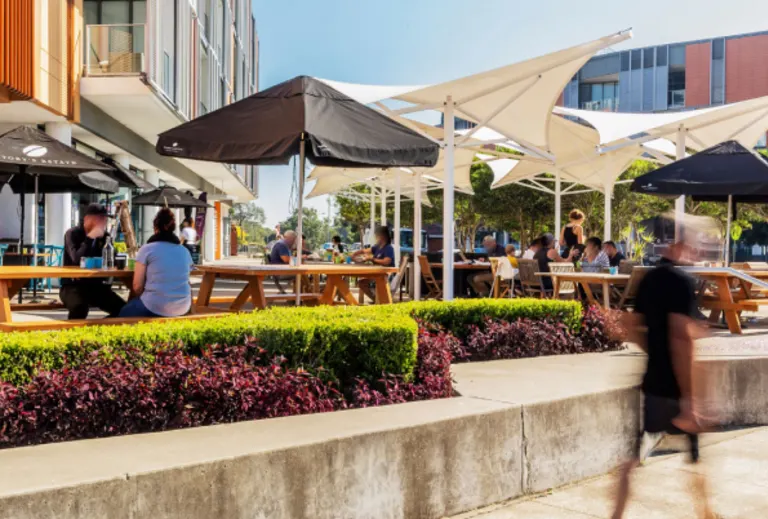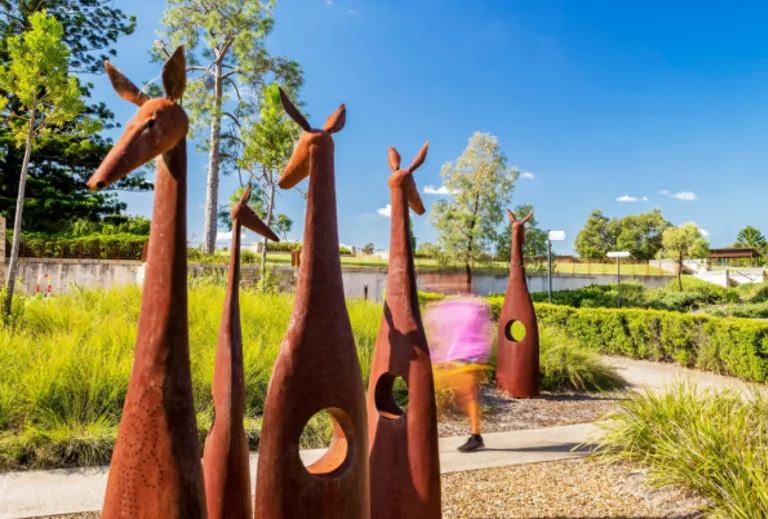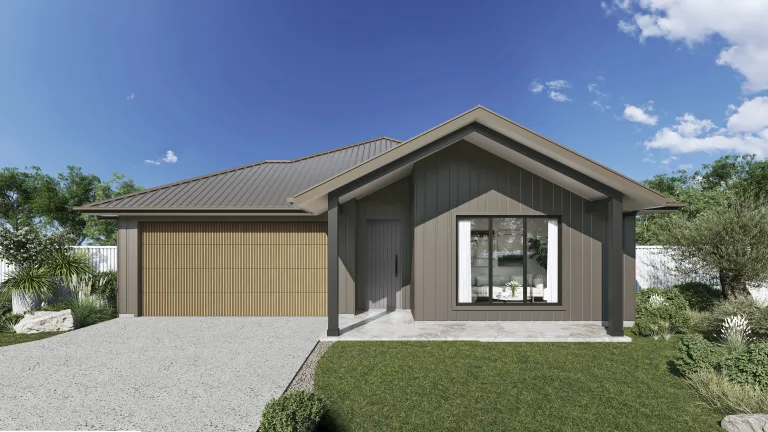
About this guide
This guide shows how councils and communities can take control of their energy generation and share it.
At Landcom, our aim is to create innovative and productive places that demonstrate global standards of liveability, resilience, inclusion, affordability and environmental quality. Through our projects, we aim to create a legacy of sustainable places for future generations.
In our Sustainable Places Strategy, as part of our environmental targets for energy and emissions, we seek to conserve energy and drive energy-efficient, low carbon, low emissions precincts for the future. Creating a spark supports our approach based on research, collaboration and international benchmarking.
Creating a spark is a collaboration between Landcom, Campbelltown City Council and Sourced Energy to demystify community-based energy sharing.
This guide aims to answer one important question:
What if electricity generated within a community was available for consumption by the community?
In doing so, this guide:
- introduces the concept of an energy sharing community
- provides an overview of technologies, electricity market rules and regulations, and
- shows how councils and developers can encourage local generation and future opportunities for energy sharing.
Community electricity sharing is evolving rapidly, so this online guide provides the latest information when considering electricity sharing.
Energy sharing
![]() Click on the flashing icons in the image below to explore how Energy sharing can work.
Click on the flashing icons in the image below to explore how Energy sharing can work.

Embedded network operator
The embedded network operator is the entity responsible for managing the co-operative’s infrastructure. This includes management of poles and wires (either wholly or partly owned by the distributed network service provider (DNSP) or the co-operative) through to running the distributed energy resource management system that delivers the services of the energy sharing community.
The role of the embedded network operator is to operate the energy sharing community’s network and ensure it always delivers reliable and certain supplies to all members, with the best possible cost savings and resource allocation.
Distribution infrastructure
Distribution infrastructure includes the power poles, wires, transformers and substations that move electricity around the grid, and will be used to deliver electricity to members of the energy sharing community.
Distribution infrastructure can be wholly owned by a distributed network service provider (DNSP) such as Ausgrid, or a mix. A mix might be where some infrastructure is partly owned by the energy sharing community and/or privately managed embedded networks (such as an industrial park) that are also members of the energy co-operative.
Distribution infrastructure influences the ability to switch electricity between users, and circulate and supply electricity back into, or out of, the main grid run by a distributed network service provider (DNSP).
Distributed energy resource management systems (DERMS)
The distributed energy management system (DERMS) is a management platform that allows the owner of the distributed energy resource (DER) or network operator to automate how and when the electricity is used, based on predefined rules.
For example, a household equipped with PV solar generation can choose when the power it generates will be used directly by the household, distributed to an onsite battery or community battery, or exported into the market.
Energy trading and settlement platform
The energy trading and settlement platform is the technology that manages the financial transactions between members of the co-operative, as well as between the energy sharing community and the distributed network service providers (DNSPs).
The platform constantly records the electricity provided by each distributed energy resources (DER) device. Is also records the electricity used by each member of the co-operative (how much and when), then uses a pricing schedule agreed to by all the parties to calculate at a charge out costs to each member.
In effect, this platform does the job of an energy retailer and is used within an embedded network.
Distributed energy resources (DERs)
Distributed energy resources (DERs) are sources of electricity generation and supply.
They include rooftop solar, micro wind turbines, local batteries and, potentially electric vehicles with vehicle-to-grid (VTG) capabilities.
DERs can either be installed: behind the meter (e.g. rooftop PV solar systems and batteries), or in front of the meter (e.g. purpose built PV solar and wind farms and/or community batteries where electricity is generated and managed within a cooperative ownership model or by the distribution network).
Energy measurement system
Energy measuring systems are measuring devices (e.g. smart meters) that help distributed energy resource management systems (DERMS) provide detailed measurement and control.
DERMS may be owned and operated by an energy co-operative, or by households, businesses and government members of the energy sharing community.
DERMS provide the detailed and real-time information needed to monitor and record electricity flows.
A collaboration between
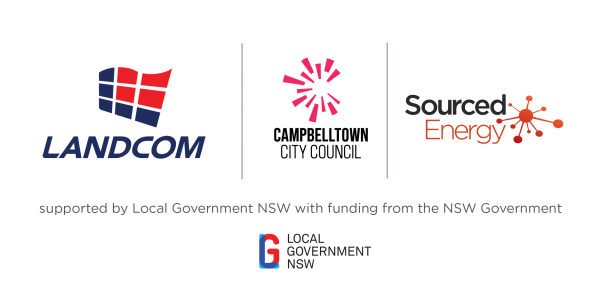
Landcom notes the findings as a contribution to the ongoing exploration of ways to enable community energy sharing in NSW but does not endorse specific conclusions and recommendations. Users are advised to seek professional advice and refer to the relevant regulations, as necessary, before acting in relation to any matters covered by this paper.
